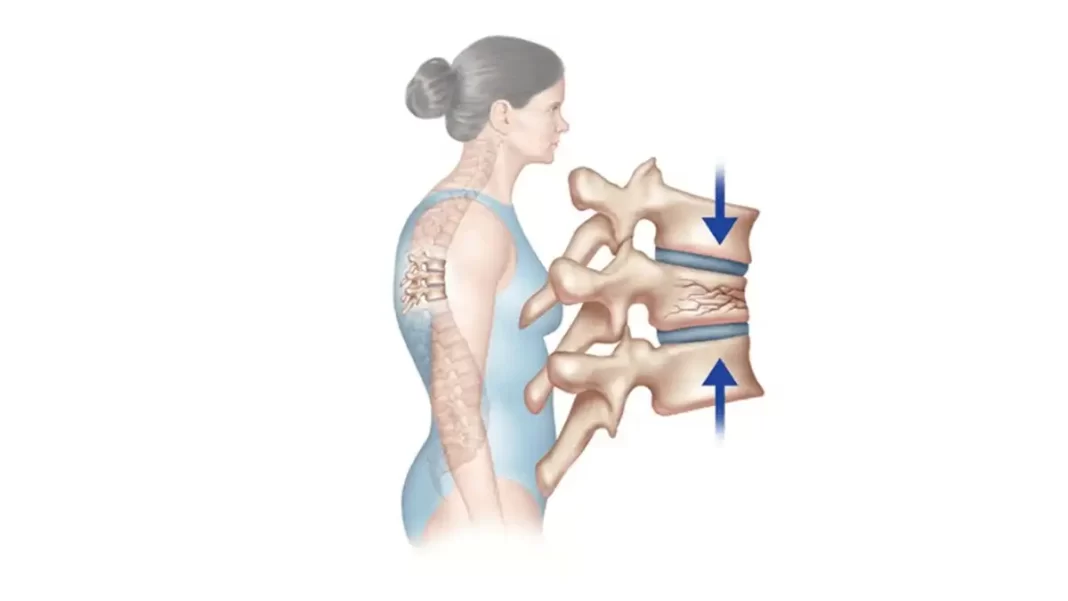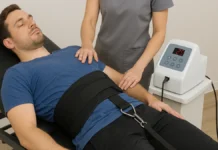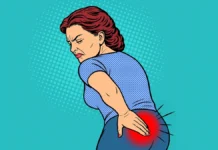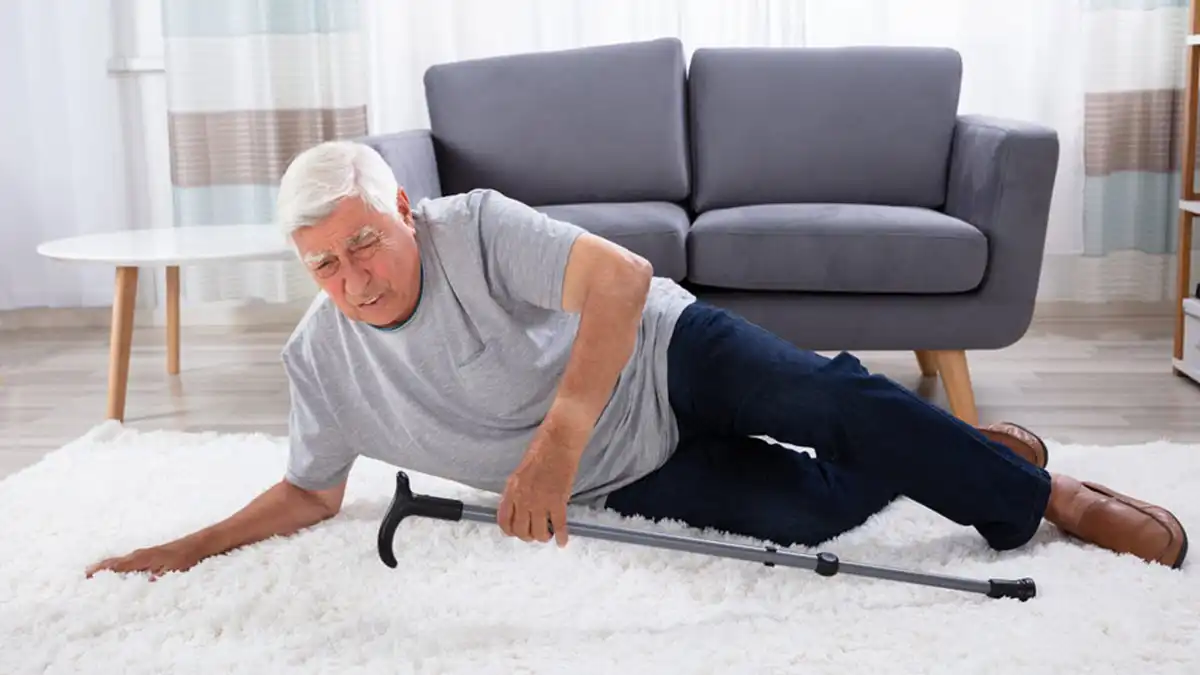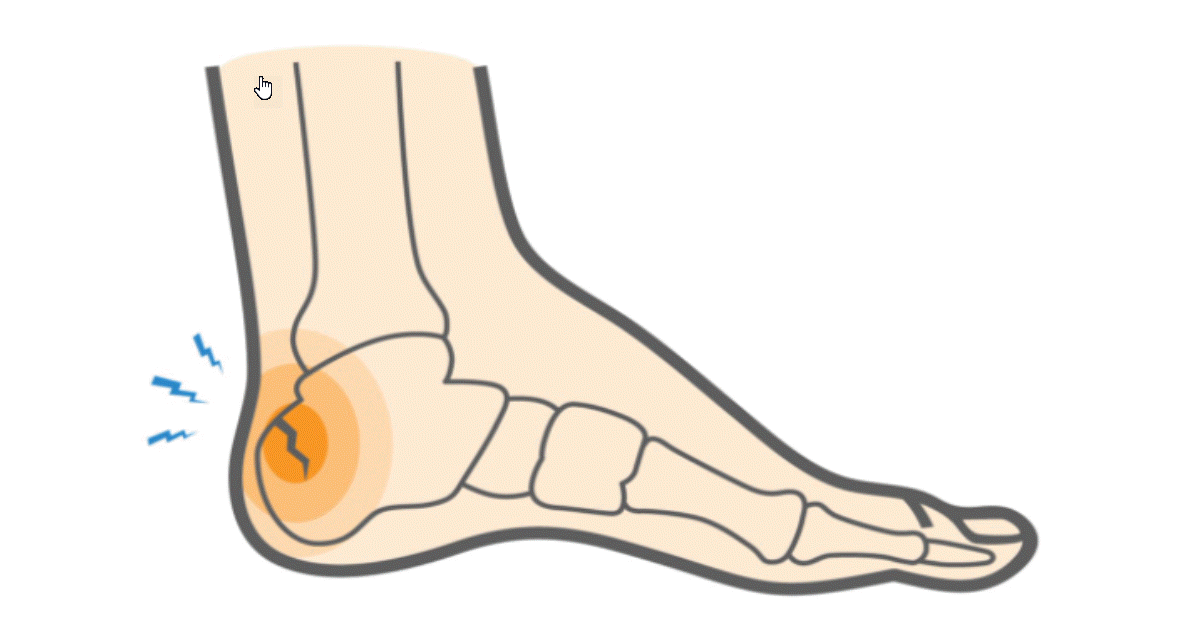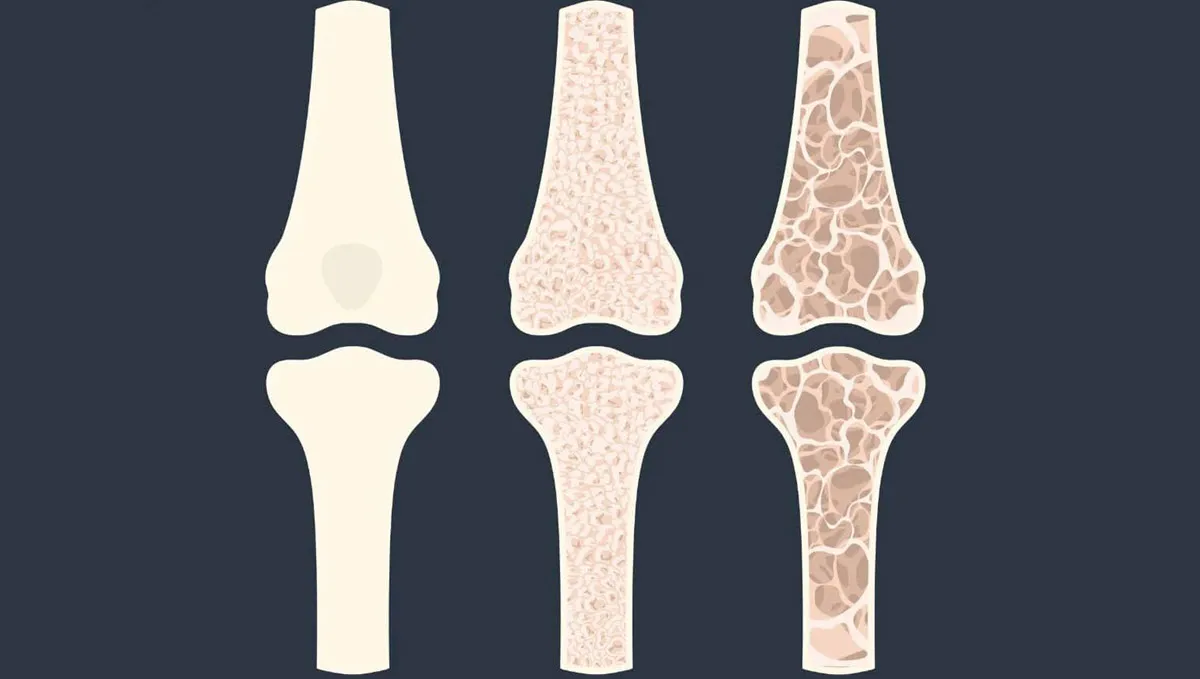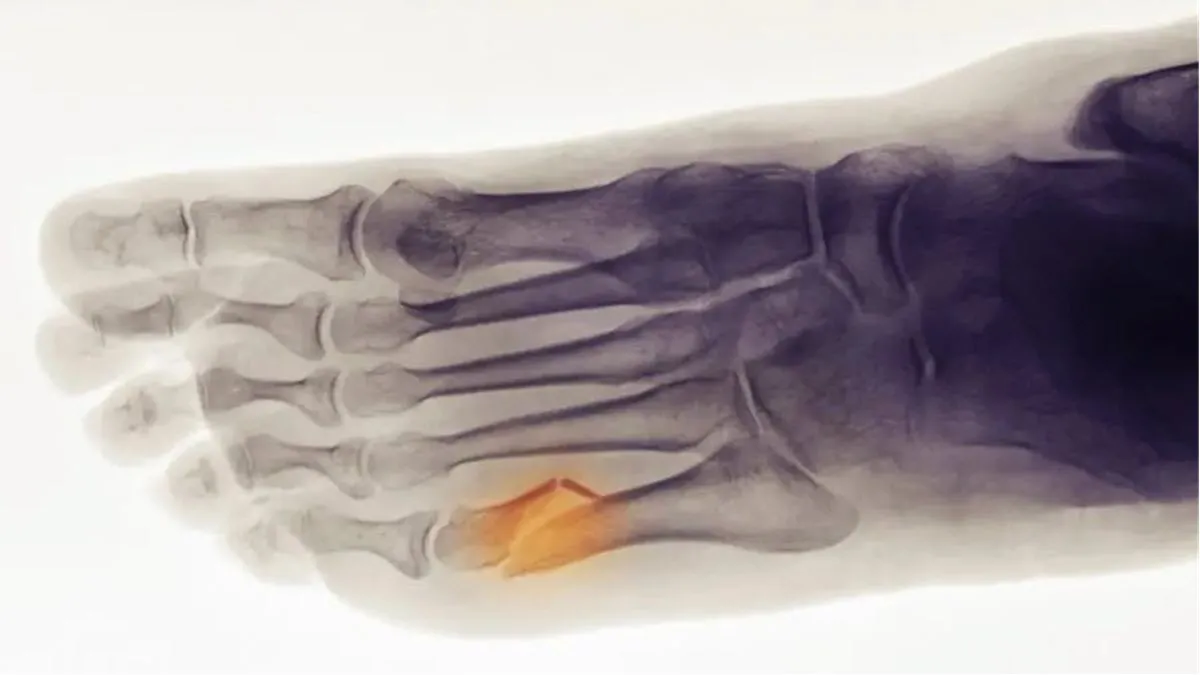Introduction
Vertebral collapse, medically called spinal compression, is a phenomenon where one of the vertebrae in the spine sags or becomes compressed, often associated with symptoms such as pain, loss of height, and sometimes neurological disorders. Osteoporosis is frequently identified as the main cause of this problem.
Osteoporosis weakens the bones of the spine, making them unable to withstand stress and pressure normally. Therefore, simple everyday actions, such as coughing, twisting, or lifting objects, can lead to spinal compression in people suffering from this condition.
Although osteoporosis is the most common cause, other factors can also contribute to this condition. Trauma, cancer, chemotherapy, infections, prolonged use of steroids, hyperthyroidism and radiation therapy are recognized as factors that can weaken bones and cause a compression fracture.
Various other elements can contribute to decreased bone density, thereby increasing the risk of spinal compression. Smoking, alcohol abuse, decreased estrogen levels in postmenopausal women, anorexia, kidney disease and certain medications are all factors that can compromise bone strength and lead to spinal compression problems. .
It is important to emphasize that vertebral compression can have significant consequences, going beyond simple pain. Loss of height is often an indicator, but neurological problems can also occur in some cases, making appropriate medical management essential.
Prevention and management of spinal compression requires a holistic approach. To minimize the risk, it is crucial to adopt a healthy lifestyle, including a diet rich in calcium and vitamin D, regular physical activity and stopping smoking and alcohol abuse. Medical treatments may include medications to strengthen bones, physical therapies, and in some cases, surgeries to stabilize the spine.
In conclusion, vertebral collapse is a serious condition that can result from a variety of factors, with osteoporosis being the most common cause. A thorough understanding of the underlying causes, coupled with preventive measures and appropriate medical interventions, is essential to minimize complications and improve the quality of life of those affected by this condition.

Epidemiology
- Prevalence: Vertebral fractures are relatively common among older adults, particularly postmenopausal women. The prevalence increases with age, due to the decline in bone density associated with aging.
- Impact of osteoporosis: Osteoporosis is one of the main causes of vertebral compression. Vertebral fractures associated with osteoporosis are often called fragility fractures.
- Gender and risk factors: Women have a higher risk of developing vertebral fractures, especially after menopause. Other risk factors include a family history of fractures, low body mass index, excessive alcohol consumption, smoking and low physical activity.
- Asymptomatic: It is important to note that many vertebral fractures may be asymptomatic and go unnoticed, which can make it difficult to estimate the true prevalence.
- Diagnosis and monitoring: Spinal collapse can be diagnosed using imaging tests such as x-rays. However, not all vertebral fractures are diagnosed, as some people do not have obvious symptoms.
Pathophysiology
The pathophysiology of a vertebral fracture involves alterations in the normal structure and function of the spine due to traumatic force or excessive stress. Vertebral fractures can occur as a result of various incidents such as car accidents, falls, sports injuries, or pathological events such as osteoporosis.
Here are the main stages of the pathophysiology of a vertebral fracture:
- Traumatic Force: Vertebral fracture is often triggered by a traumatic force that exceeds the normal resistance capacity of the vertebra. This may be due to a direct impact, such as falling on your back, or an axial compressive force, such as landing on your feet after a fall.
- Type of Fracture: Vertebral fractures can manifest in different forms, including:
- Compression fractures: The vertebra becomes compressed under the effect of an axial force.
- Flexion fractures: The vertebra bends forward under the effect of a flexion force.
- Extension fractures: The vertebra bends backwards under the effect of an extension force.
- Torsional fractures: The vertebra is twisted due to a rotational force.
- Breakage of Bone Continuity: The traumatic force causes a break in the bone continuity of the vertebra, leading to a fracture. This rupture can occur at the level of the vertebral body, pedicles, laminae, or spinous processes.
- Impact on Surrounding Structures: A vertebral fracture can result in damage to surrounding structures, including intervertebral discs, ligaments, spinal nerves, and spinal cord. Compression of nerve structures can lead to neurological symptoms such as numbness, tingling, muscle weakness, or even paralysis, depending on the severity of the fracture.
- Inflammation and Cellular Response: Bone rupture triggers a local inflammatory reaction. Inflammatory cells participate in the repair process by removing cellular debris and stimulating tissue regeneration.
- Fibrocartilaginous Callus Formation: Over time, a fibrocartilaginous callus forms around the fracture to stabilize the area and facilitate bone healing.
- Bone Consolidation: Bone consolidation, also called osteosynthesis, occurs as the fibrocartilaginous callus mineralizes and forms a strong bony bridge, restoring bone continuity.
- Possible Long-Term Complications: Vertebral fractures can lead to long-term complications such as spinal deformity, malunion, nonunion, and persistent neurological problems if the spinal cord is injured.
Causes
Vertebral compression can be caused by a variety of factors, including:
- Osteoporosis: This is one of the most common causes. Osteoporosis weakens bones, making them more prone to compression fractures.
- Trauma: Accidents, falls or injuries can lead to spinal compression.
- Cancer: Some cancers, especially those that spread to the bones (metastases), can weaken the vertebrae.
- Chemotherapy: Some cancer treatments, such as chemotherapy, can affect bone density.
- Infections: Spinal infections can weaken the vertebrae.
- Prolonged steroid use: Long-term use of steroid medications can contribute to bone density loss.
- Hyperthyroidism: Excessive functioning of the thyroid gland can influence bone health.
- Radiation therapy: Radiation therapy, often used to treat certain cancers, can affect bone structure.
- Other factors: Things like smoking, alcohol abuse, decreased estrogen levels, anorexia, kidney disease, and certain medications can also contribute to decreased bone density, increasing risk of vertebral compression.
Symptoms
Symptoms of spinal compression can vary from person to person, but they generally include:
- Back pain: Pain is one of the most common symptoms. It can be localized in the spine and worsen with movement or pressure on the affected area.
- Loss of height: Vertebral compression can lead to a reduction in height because the compression of the vertebrae reduces the height of the spine.
- Change in posture: Some individuals may adopt a hunched or hunched posture due to spinal compression.
- Stiffness: Spinal stiffness may be felt, limiting mobility.
- Breathing problems: In severe cases, compression of the vertebrae can affect the capacity of the lungs, leading to difficulty breathing.
Differential diagnostics
The diagnosis of spinal compression, also called spinal compression, is usually made by a healthcare professional, such as a general practitioner or a specialist in orthopedics or rheumatology. The diagnostic process involves several steps:
- History: The doctor will begin by collecting detailed information about your medical history, current symptoms, and other relevant factors such as trauma or chronic illnesses.
- Physical Exam: A physical assessment will be performed to examine posture, mobility, and to identify any tenderness or pain in the affected area.
- Imaging tests: X-ray tests, such as spine x-rays, may be done to visualize the spinal structure. The images make it possible to identify possible fractures, deformations or reductions in height of the vertebrae.
- Bone density assessment: If osteoporosis is suspected as the underlying cause of spinal collapse, a bone mineral density (BMD) measurement may be performed, often by bone densitometry (DEXA).
- Additional tests: Depending on the initial results, other tests may be ordered, such as blood tests to assess thyroid function, bone turnover markers, or other specific tests.
- Specialty consultation: If necessary, the doctor may refer you to a specialist, such as an orthopedist, rheumatologist, or neurologist, for further evaluations or specific treatment recommendations.
Recommendations for those with a vertebral fracture
Recommendations for spinal compression depend on the severity of symptoms, the underlying cause, and the person’s overall condition. However, here are some general recommendations that can be considered:
- Medical consultation: If you experience symptoms of spinal compression such as persistent pain, loss of height or difficulty breathing, it is recommended to consult a healthcare professional. He will be able to assess the situation, make a precise diagnosis and recommend an appropriate treatment plan.
- Treating the underlying cause: If the spinal collapse is caused by osteoporosis, treating this underlying condition will be a priority. This may include bone-strengthening medications, calcium and vitamin D supplements, and lifestyle changes.
- Pain management: Analgesics or anti-inflammatories may be prescribed to relieve pain associated with spinal compression.
- Physical therapy: Specific exercises may be recommended to strengthen back muscles, improve posture and promote mobility.
- Lumbar Support: Using lumbar support devices can be beneficial in relieving pressure on the spine
- Surgery: In cases of severity or ineffectiveness of other treatments, surgical intervention may be considered to stabilize the spine.
- Fall prevention: People suffering from spinal compression, especially due to osteoporosis, should take precautions to prevent falls, which can increase the risk of fractures.
Prevention
Vertebral collapse, also called spinal compression, is often associated with osteoporosis, a condition characterized by decreased bone density. Prevention of vertebral compression is therefore often linked to the prevention of osteoporosis and the promotion of bone health. Here are some specific preventive measures you can take to avoid spinal compression:
- Adequate intake of calcium and vitamin D:
- Calcium is essential for the formation and preservation of bone density. Dairy products, green leafy vegetables, almonds and canned sardines are good sources of calcium.
- Vitamin D helps the body absorb calcium. Moderate exposure to sunlight is a natural source of vitamin D, and supplements may be recommended if deficient.
- Regular exercise:
- Regular exercise, especially activities that stress the bones, such as walking, running, dancing, and weight training, helps maintain bone density and strengthen the muscles that support the spine.
- Avoid smoking and limit alcohol consumption:
- Smoking and excessive alcohol consumption can contribute to bone density loss. Avoiding these habits can help maintain bone health.
- Maintaining a healthy weight:
- Maintaining a healthy body weight helps reduce the load on the spine, which can help prevent spinal compression.
- Avoid falls:
- Falls represent a significant risk of vertebral fractures in people with osteoporosis. Taking precautions to prevent falls, such as using non-slip shoes, maintaining a clear environment, and using mobility aids as needed, can help prevent spinal fractures.
- Regular osteoporosis risk assessment:
- People at increased risk of osteoporosis, including postmenopausal women and older adults, should speak with their healthcare professional to assess their risk and discuss appropriate prevention measures, including the possibility of specific medications if necessary.
- Maintaining proper posture:
- Adopting proper posture, whether sitting or standing, can help reduce pressure on the spine and prevent slumping.
Current research on vertebral fracture
- Biomechanics and imaging techniques:
- Ongoing research focuses on understanding the biomechanics of the spine and how different factors contribute to spinal compression fractures. Advanced imaging techniques, such as 3D imaging and finite element analysis, are used to study the mechanical behavior of the spine.
- Minimally invasive treatments:
- Advances in minimally invasive procedures for vertebral compression fractures continue to be an area of interest. Techniques such as vertebroplasty and kyphoplasty, where bone cement is injected into the fractured vertebra, aim to relieve pain and stabilize the spine with minimal disruption.
- Biological approaches:
- Researchers are exploring biological approaches to promote bone healing and regeneration. This includes studies on the use of growth factors, stem cells, and other biologics to improve the healing process of vertebral fractures.
- Management of osteoporosis:
- Because osteoporosis is a common cause of vertebral compression fractures, research continues in the area of osteoporosis management. This includes the development of new drugs and interventions to improve bone density and reduce the risk of fractures.
- Patient outcomes and quality of life:
- Studies are being conducted to evaluate the long-term outcomes and quality of life of people who have suffered vertebral compression fractures. This includes research into rehabilitation strategies and lifestyle interventions to improve overall well-being.
- Technological innovations :
- Advances in medical technology, such as robotics and navigation systems, are being explored for use in spinal procedures and surgeries. These technologies aim to improve accuracy and patient outcomes.
Radiographic signs of vertebral fracture
Radiographic signs of vertebral collapse may include the following:
- Reduction in vertebral height: X-rays may show a decrease in the height of one or more affected vertebrae.
- Compression fracture: The X-ray may reveal compression or flattening of the vertebra, indicating a compression fracture.
- Widening of adjacent intervertebral spaces: Due to compression of the vertebra, spaces between adjacent vertebrae may appear widened.
- Spinal deformity: X-rays may show spinal deformity, with abnormal curvature or loss of normal alignment.
- Presence of anterior wedge fractures: The shape of the fracture may resemble a wedge on radiographs, characteristic of a compression fracture.
- Displacement of bone fragments: When a fracture occurs, bone fragments may shift, which may be visible on x-rays.


Quizz
Questionnaire 1
- What is the main cause of spinal compression, according to the text?
- has. Trauma
- b. The cancer
- vs. Osteoporosis
- d. Hyperthyroidism
- e. Infections
- What are the possible consequences of vertebral compression?
- has. Height loss only
- b. Neurological problems only
- vs. Pain and loss of height
- d. No notable consequences
- e. Breathing difficulties only
- What are the recommended prevention methods for spinal compression?
- has. Smoking and excessive alcohol consumption
- b. Regular exercise and a diet rich in calcium
- vs. Steroid treatment and radiotherapy
- d. Weight loss and moderate sun exposure
- e. No preventive measures are recommended
- What do vertebroplasty and kyphoplasty aim to accomplish?
- has. Relieve pain and stabilize the spine
- b. Reduce bone density
- vs. Preventing compression fractures
- d. Increase the size of the vertebrae
- e. Stimulate bone growth
- What is the ma
- has. Male gender
- b. Low body mass index
- vs. Moderate alcohol consumption
- d. Regular exposure to the sun
- e. Intense physical activity
True or False Questions
- True or false: Osteoporosis is the only cause of spinal collapse mentioned in the text.
- True or False: The prevalence of vertebral fractures decreases with age due to decreased bone density.
- True or false: Vertebral fractures can be asymptomatic, making it difficult to estimate their true prevalence.
Note: Be sure to check the answers carefully, as some questions may require selecting multiple choices.
Answers to Multiple Choice Questions:
- vs. Osteoporosis
- vs. Pain and loss of height
- b. Regular exercise and a diet rich in calcium
- has. Relieve pain and stabilize the spine
- b. Low body mass index
Answers to True or False Questions:
- False: Other causes of spinal compression are mentioned, including trauma, cancer, chemotherapy, etc.
- False: The prevalence of vertebral fractures increases with age due to decreased bone density.
- True: The text mentions that many vertebral fractures may be asymptomatic and go unnoticed.

